How to Care for Cast Iron Pans
Cast iron pans are durable, versatile, and easy to maintain. With simple care and regular use, your cookware will last for generations and deliver great results every time.
If you’ve read the about me section of this blog, you know that I adore my grandma’s cast iron skillet. It is a kitchen tool that has served my family well for nearly 70 years. However, my grandma’s iron skillet isn’t the only cast iron I use in my kitchen. My collection includes skillets from the 1930’s, 1960’s, and 1980’s. I also have several more modern griddles, Dutch ovens and loaf pans. There is a common misconception that cast iron is difficult to maintain but that simply isn’t true. Time and time again, I reach for my cast iron because it’s durable, easy to use and easy to clean. With the proper use and care, it’s a very economical choice that will last for generations.
There is much controversy among cast iron users on the best way to care and maintain it. The truth is, there is more than one way. In this post, I share with you how I effectively use and maintain my cast iron pans.
*This post contains affiliate links. Please see full disclosure for details.
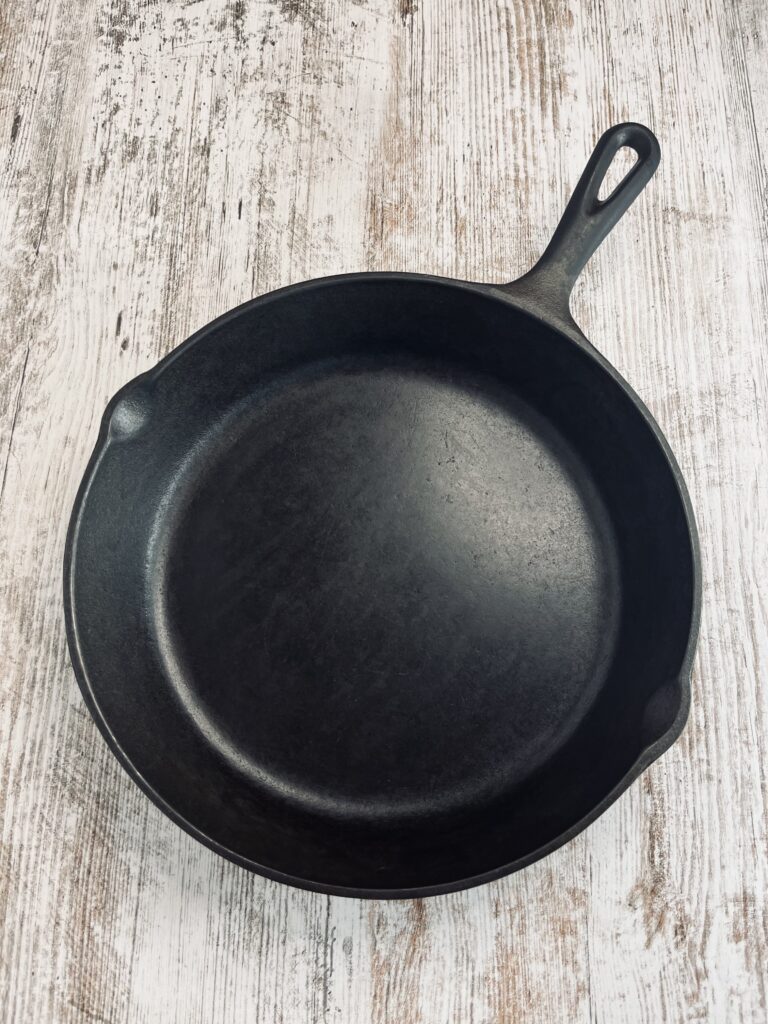
What is seasoning?
Seasoning is what creates the natural non-stick properties of cast iron cookware. This is done by applying a thin layer of high smoke point oil then heated to 450°-500° F. The results polymerize the oil to protect the cookware from rust. It also prevents food from sticking.
Manufacturers usually pre-season most modern-day cast iron before selling it. These tips assume you have clean and seasoned cast iron. Additionally, this post does not include cast iron that has an enamel coating. Enamel cast iron has a completely different set of tips for cleaning and care.
3 Facts You Need to Know About Cast Iron:
- Cast iron rusts quickly if exposed to excessive moisture.
- Store your cast iron with a very thin layer of oil to protect the seasoning and prevent rust.
- Use it frequently.
That sums up the basic understanding of cast iron. Don’t over complicate it. It really is that simple. Now, let’s go into detail about how I use and care for my cast iron pans.
How to Clean:
- Don’t use harsh chemicals or your dishwasher. Hand wash only with a mild dish detergent. Yes, I use mild dish detergent to wash my cast iron. Many people believe that if you use soap on cast iron it could remove the seasoning. This advice is likely from a time when soap was harsher than it is today. What once was sound advice is no longer relevant. If your mild dish detergent is safe enough for your bare hands, it is safe enough for your cast iron. I have been washing my cast iron pans in mild dish detergent for decades and it has never removed the seasoning.
- Why clean with mild dish detergent? It helps to remove any excess carbon build up and food residue from the pan. Carbon build up is the black stuff that comes from cooking with cast iron. While a small amount can be normal, I don’t care for excessive carbon build up on my food. Especially in my bread pans. We do not want black spots of carbon on our bread loaves. Mild dish detergent is the easiest way to prevent this.
- Make sure you are getting all the food off. I use a coarse textured scrub cloth for everyday cleaning. A plastic scraper also works well. I own a stainless steel chainmail scrubber for stubborn foods but honestly, I rarely need to use it.
- Keep cast iron dry. Don’t leave it soak in the dish water as it will rust quickly. Simply wash it with a dish cloth, rinse it well and then use a towel to thoroughly dry it. A good quality microfiber cloth is my preference. I like both Norwex and E-Cloth microfiber. However, any towel will work fine.
Tip:
Should you find mild surface rust, rub a small amount of apple cider vinegar on it. Then, rinse thoroughly with water. Failing to remove all the vinegar can eat away at the cast iron comprising the seasoning. It will also cause additional rust and pitting over time.
How to Store:
- After you clean and thoroughly dry your cast iron, store it with a very thin layer of oil to prevent rust and protect the seasoning. Lard or grapeseed oil have high smoke points and are excellent choices. Some of my recipes call for lard, so I always have it on hand. Lard is what I use to season and store all my cast iron cookware.
- Time and time again, I see people using way too much oil for seasoning. This causes buildup on the cast iron interfering with the non-stick properties. A very thin layer of oil is a must. Too much is not a good thing. The best way to think about this is to apply the oil and then use a dry cloth to wipe as much of it away as possible. The thin layer left will be what is needed to keep your cast iron in great shape for generations.
- It’s best to store cast iron by hanging it on a sturdy rack. This allows plenty of air flow to your pans. If you must stack them due to storage space, place a protective barrier in-between each pan. There are products on the market specifically designed for this purpose. However, I have found that a folded paper towel also works. This reduces the risk of moisture retention that can cause rust.
How to Cook with Cast Iron Pans:
- Cast iron cookware needs to be used regularly. The more you use it the stronger the seasoning becomes, giving you the best results.
- If you are cooking with cast iron on the stove top, make sure to heat the pan up on a low to medium temperature prior to adding the oil (if needed) and then the food. This ensures the cast iron is evenly heated creating a better non-stick surface. It also ensures your food cooks evenly throughout.
- Don’t overheat your pans. Cast iron is a great conductor of heat. High heat temperatures risk food getting burnt.
- When greasing bread loaf pans, choose the right kind of oil. Some oils, such as olive oil, don’t have a high enough smoke point to effectively prevent bread from sticking to the pan. I always liberally grease my loaf pans with unsalted butter when baking bread. If you have brand-new cast iron pans and you find that food is sticking to them, you may need to switch to an oil with a higher smoke point.
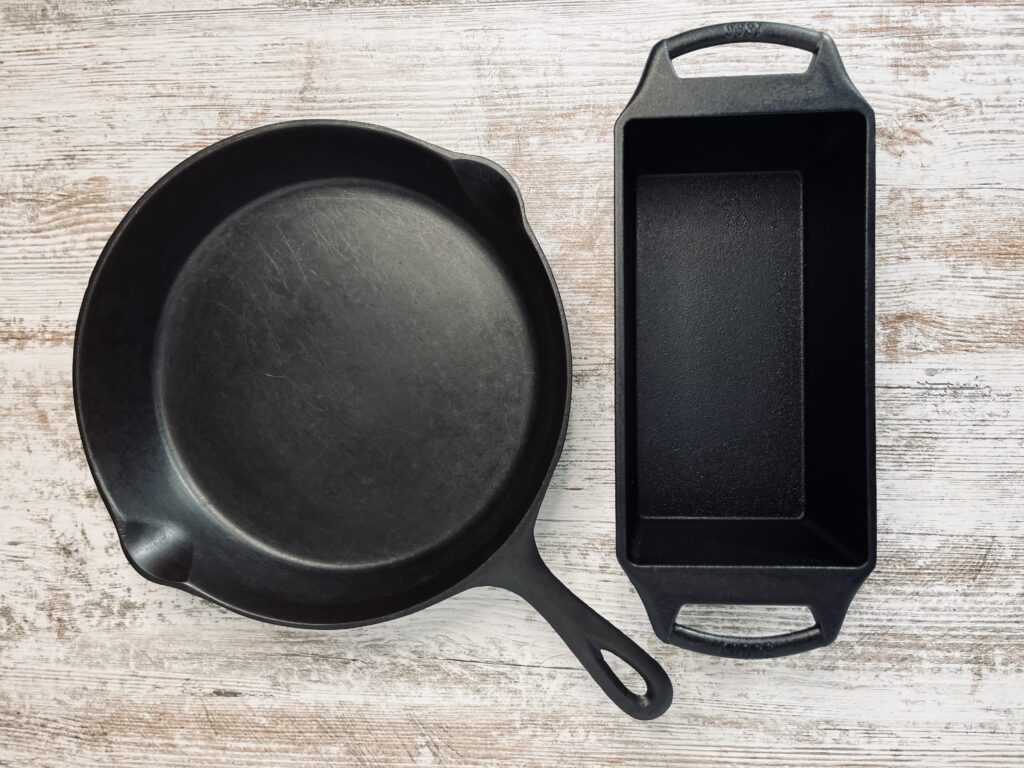
Conclusion
The more you use your cast iron, the better it performs—each meal builds character and strength into your cookware. Don’t be intimidated by the myths; with a little care and regular use, your cast iron will reward you with decades of delicious meals and memories. Embrace the tradition, enjoy the process, and know that every time you reach for your cast iron pans, you’re continuing a legacy that connects generations. Happy cooking!
Shop this post:
*This post contains affiliate links. As an Amazon Associate, I earn from qualifying purchases. If you click and make a purchase, I may earn a small commission at no extra cost to you. Rest assure, I only recommend products I have personally used and genuinely love, so you’re in good hands.
Lodge Manufacturing Company Cast Iron Scrub Cloths
Lodge Cast Iron 2 Piece Loaf Pan Set
E-Cloth Home Cleaning Set with Microfiber Cleaning Cloths for Cars, Bathroom, Kitchen, & More – Microfiber Towels That Clean with No Added Chemicals – 8 Specialized Cloths in Assorted Colors
Lodge SCRAPERCOMBO Pan and Grill Scraper, Set of 2
All-Clad Premium Cookware Protectors: Pot and Pan Protectors for Kitchen Organization – Perfect for Cast Iron, Steel, or Glass, (3-Piece), Black/Grey
Lodge L8DOL3 Cast Iron Dutch Oven with Dual Handles, Pre-Seasoned, 5-Quart
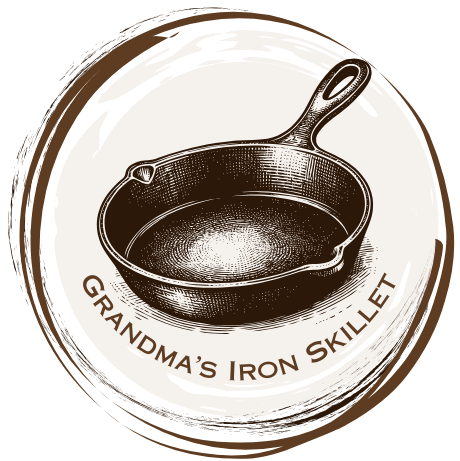

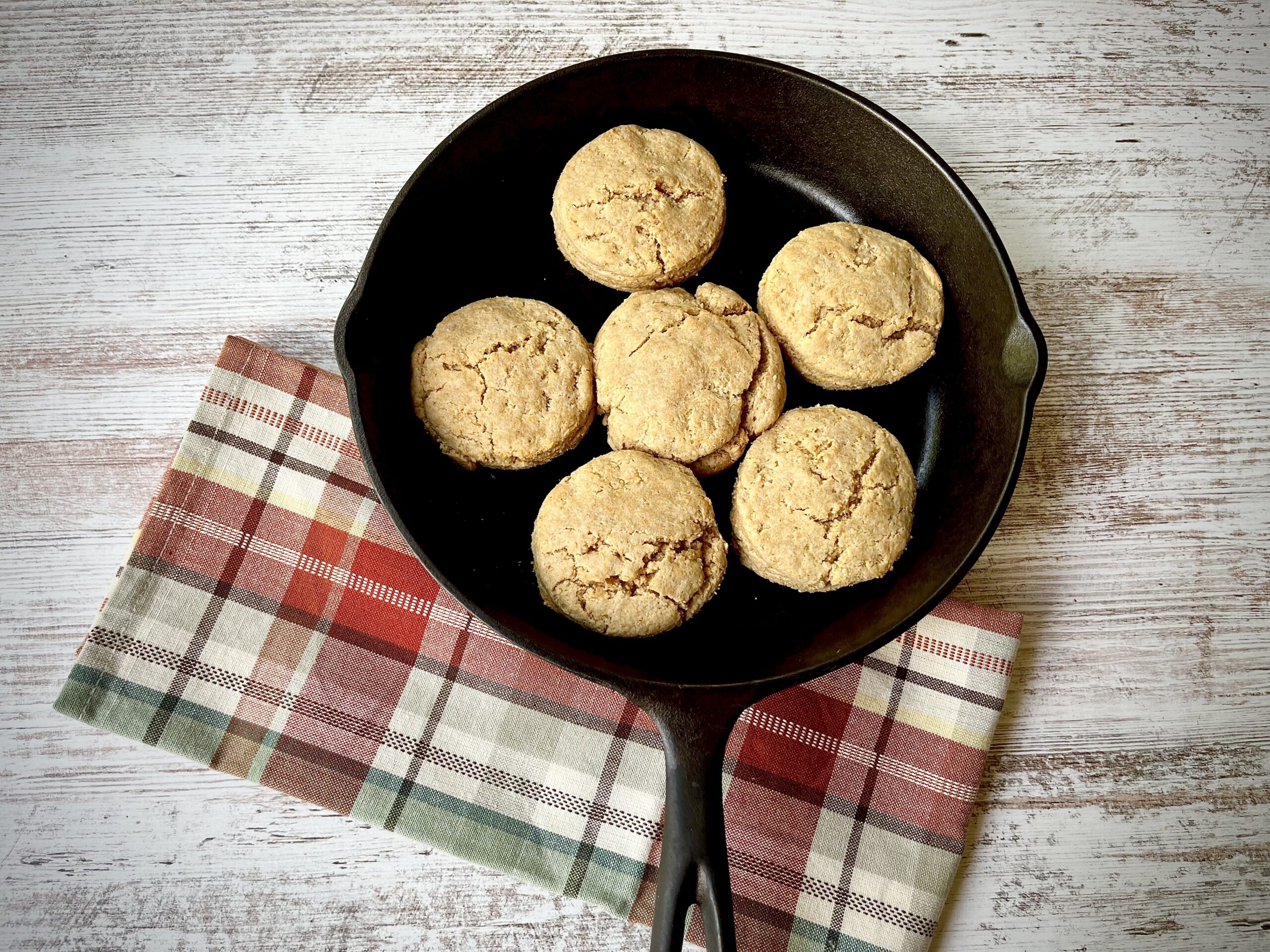

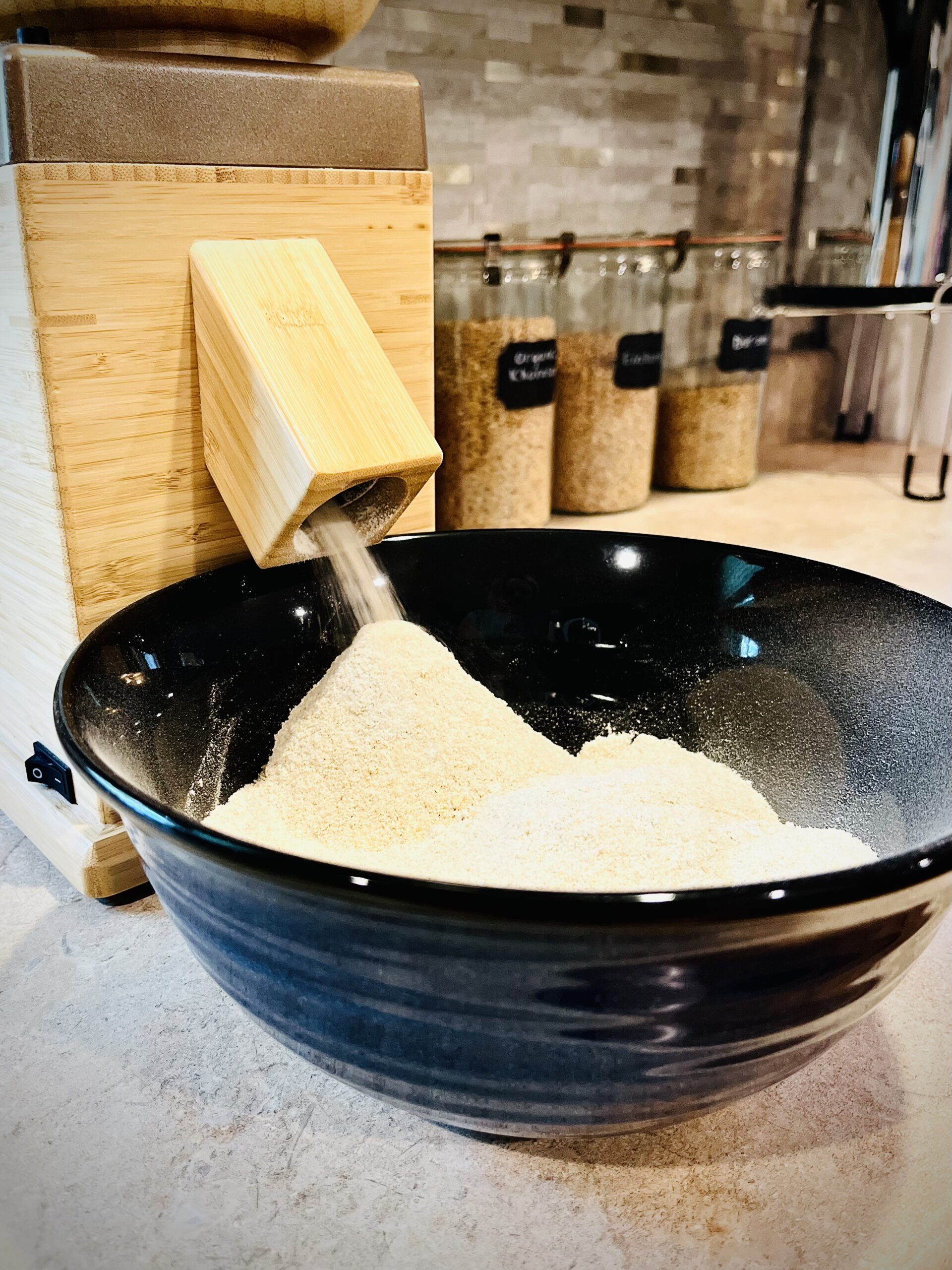
Cast-iron pans are such a game-changer once you figure them out. I used to be confused by what “seasoning” meant. It sounded way too complicated. Now, I can’t imagine cooking without my cast-iron pan. Thanks for breaking everything down so clearly.
Great tips for cleaning and maintaining your pans. I will definitely be taking these steps with my cast iron pans.